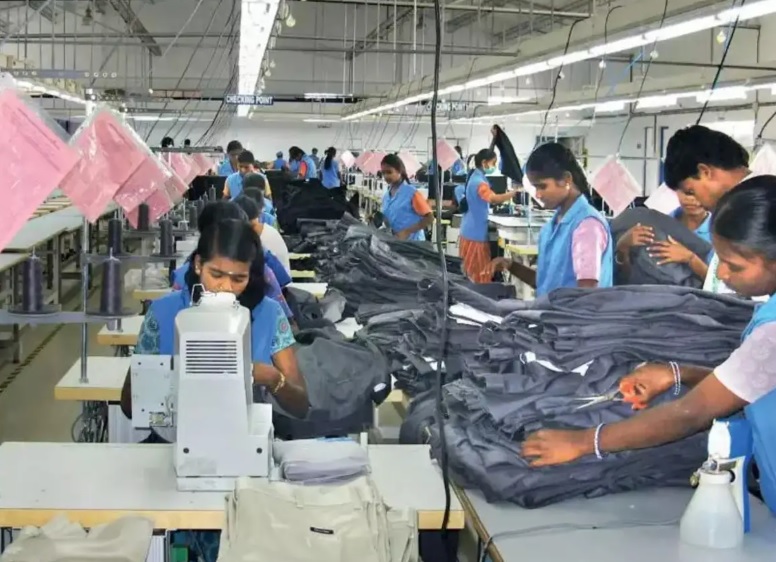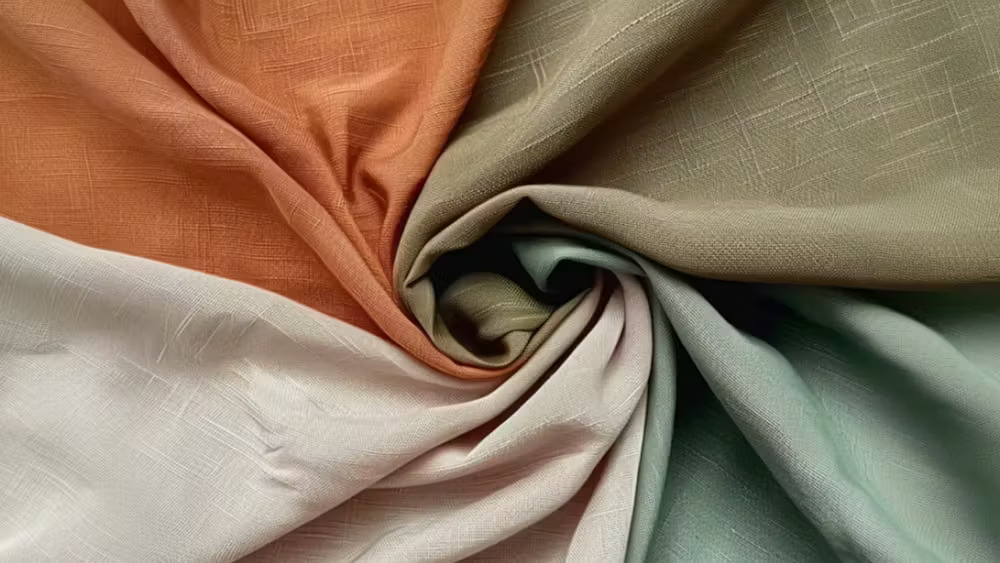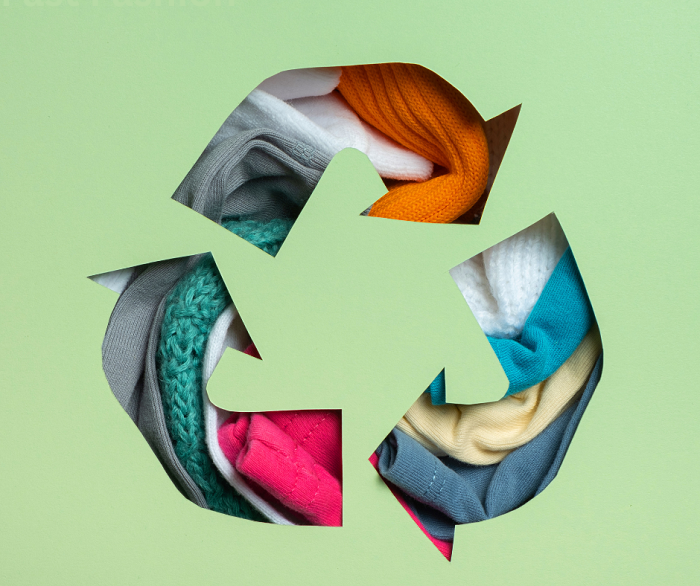FW

Amazon has announced it will be ending its ‘Try Before You Buy’ program on January 31, 2025. This marks the end of a six-year experiment that allowed Prime members to order clothes, shoes, and accessories and try them on at home before committing to a purchase.
Launched in 2018 as an expansion of the ‘Prime Wardrobe’ pilot program, ‘Try Before You Buy’ aimed to address a key challenge in online apparel shopping: uncertainty about fit and style. Customers could order up to six items, try them on for seven days, and only pay for what they kept. Returns were free, encouraging experimentation and reducing the risk associated with online fashion purchases.
Did the experiment succeed?
The program gained significant traction in its early stages, particularly among frequent online shoppers and those seeking a more convenient alternative to traditional dressing rooms. It offered a unique value proposition in the competitive fashion e-commerce landscape, driving customer engagement and loyalty. Indeed, ‘Try Before You Buy’ significantly impacted the fashion and apparel sector. It allowed brands to reach a wider audience, gather valuable customer feedback, and reduce return rates associated with sizing and fit issues.
Table: Impact and reach of the experiment
|
Metric |
Impact of ‘Try Before You Buy’ |
|
Customer Engagement |
Increased customer interaction with fashion products |
|
Brand Reach |
Expanded market access for apparel brands |
|
Return Rates |
Potentially reduced returns due to improved fit selection |
|
Customer Satisfaction |
Enhanced the online shopping experience for fashion items |
In fact, several brands reported positive results from participating in the program. However, despite its success, Amazon has decided to discontinue the program. The company cites the increasing use of AI-powered tools like virtual try-on, personalized size recommendations, and improved size charts as reasons for this decision. Amazon's decision to end it reflects a broader trend in the industry towards leveraging technology to enhance the online shopping experience. While the program provided a valuable service, the company believes that its AI-powered features can now offer a more efficient and scalable solution to address fit and style concerns.
However, the end of ‘Try Before You Buy’ raises questions about the future of similar programs and the role of the model in online fashion retail. Will other companies follow suit, or will alternative solutions emerge to bridge the gap between online and in-store shopping experiences?
As technology continues to evolve, the fashion e-commerce landscape is likely to undergo further transformations. Whether AI-powered tools can fully replicate the benefits of physically trying on clothes remains to be seen. But one thing is certain: the quest for the perfect online shopping experience continues.
Led by the founding Ramzan family, fast-fashion chain, Quiz is finalizing plans to close up to a third of its stores in the UK as part of a major restructuring effort.
This move is expected to result in significant losses for many shareholders, with hundreds of job cuts across its 60 outlets, which currently employ around 1,500 people.
Peter Cowgill, Former Chairman, JD Sports Fashion and Chairman, Quiz, has enlisted restructuring experts from Teneo to explore options for revitalizing the business. Led by Sheraz Ramzan, the Ramzan family plans to shut down the retailer's worst-performing stores to reduce costs and halt its financial decline.
Quiz’s troubles accelerated in the weeks leading up to Christmas when it revealed worsening financial issues. The company disclosed that it was on the verge of running out of cash due to a significant decline in sales, both online and in stores. Subsequently, Quiz announced its plan to de-list from the London Stock Exchange and go private, ending a tumultuous few years as a publicly traded company.
Quiz’s shares had fallen dramatically since its 2017 IPO, where they initially traded at 161p, raising over £90 million for the founders. In less than two years, the stock had plummeted to under 20p, and it’s now trading for less than a penny. The company is urgently seeking new financing after securing a £1 million emergency loan from Sheraz’s father, Tarak Ramzan, but struggles to secure further funding, particularly from HSBC, which appears reluctant to continue supporting the business.
Last year, Quiz recorded nearly £7 million in losses, a stark contrast to the £2.3 million profit it made the previous year.
Industrialists in Ludhiana urging the World Trade Organization (WTO) to revoke its least developed country (LDC) status for Bangladesh. Bangladesh has already benefited from these provisions, which allowed the country to drive its garment exports to Europe and other regions while attracting sourcing for international brands, these manufacturers argue. Meanwhile, India’s apparel, garment, and hosiery industries—especially in Ludhiana—have been severely impacted by these advantages, leading to business closures and many more on the verge of collapse.
Bangladesh was granted the LDC status WTO in 2006. Extending for a period of 20 years, the status gave Bangladesh benefits such as zero import duties on its garments in the UK, Europe, and several other countries. The LDC status also included duty-free and quota-free (DFQF) market access, allowing Bangladesh to access major markets like Europe and boosting its garment and textile manufacturing sectors. Moreover, the flexibility in tariff adjustments and the ability to maintain higher import duties helped protect local industries and spurred growth in Bangladesh’s manufacturing sector.
Despite the hoped expiration of Bangladesh's LDC benefits, the WTO has extended them with a three-year transition period, meaning these benefits will continue until 2029. This extension has led to massive growth in Bangladesh’s garment sector, with global brands shifting their sourcing from Ludhiana to Bangladesh due to cost efficiencies and tariff advantages. Lower production costs in Bangladesh, fueled by factors such as cheaper labor, have further contributed to the shift.
However, the impact of this extension on the Ludhiana’s industry has been devastating. Competition from Bangladesh has made it difficult for Ludhiana manufacturers to retain or expand their market share in foreign markets like Europe, says Vinod Thapar, Chairman, Knitwear Club.
Badish Jindal, President, World MSME Forum, emphasizes, Bangladesh has taken full advantage of the LDC benefits, but the declining industry in Ludhiana due to these advantages is cutting into the exporters’ profitability. The WTO must revoke these provisions, as Bangladesh’s economy is doing well now.
Having crossed Rs 20, 482 crore by October, India’s apparel exports are expected to rise to Rs 30,000 crore by December 2025, registering a 15-18 per cent monthly growth.
A rise in international demand for knitwear garments has revitalized production in Tiruppur's textile units, following several challenging years. In FY2022-23, knitwear exports from the region's knitwear exports grew ti Rs 34,350 crore.
However, exports from the sector were once again hit during 2023-24 due to the Russia-Ukraine war alongwith economic slowdowns in Western markets, rising freight costs and higher electricity charges. Despite these challenges, political shifts in the US, changes in trade relations with China, and unrest in Bangladesh, exports continue to create new trade opportunities for India, says Kumar Duraisamy, Joint Secretary, Tirupur Exporters' Association (TEA).
The expiration of Bangladesh's free trade agreement (FTA) with the EU in 2027 has prompted many foreign buyers to shift their attention to India, exporters point out. The country is also set to complete negotiations for an FTA with the UK, offering small, medium, and micro enterprises an opportunity to recover, says Kumar.
The positive trend is also seen across India’s ready-made garment (RMG) industry, with RMG exports growing by 5.2 per cent growth in December 2024 compared to the same month in 2023, according to A Sakthivel, Vice-Chairman, Apparel Export Promotion Council (AEPC). From April to December 2024, India’s overall RMG exports rose by 13.2 per cent Y-o-Y to Rs 94,936 crore. Meanwhile, the Tiruppur knitwear sector is expected to grow by 15 per cent this fiscal year, pushing exports beyond Rs 40,000 crore, he adds.
Manufacturers believe India's RMG sector could achieve even greater success with additional government support. MP Mauthurathinam, President, Tiruppur Exporters and Manufacturers Association (TEAMA) urges the government to remove the tax on cotton imports, establish more FTAs, and reduce bank interest rates to fully capitalize on these opportunities.
Currently, India ranks sixth in garment exports, accounting for just 3.9 per cent of global exports, while Bangladesh holds 12 per cent, and China dominates with 36 per cent. With the right announcements in the upcoming budget, the apparel industry in India could reach new heights, Muthurathinam signs off.
This year, Milan’s menswear season kicked off with an innovative showcase by Federico Cina at the Fondazione Sozzani, located in the northern part of the Italian fashion capital.
Set on a brisk yet sunny winter afternoon, the event felt more like a Marina Abramović art installation than a traditional runway show. Crafted from dense, industrial-inspired wools, Cina’s collection was showcased with an authoritative and artistic flair.
Models portrayed characters performing daily rituals inside plywood boxes or on small stages, imbuing the garments with a sense of refined elegance. One standout moment featured a rocker-like figure in a perfectly tailored midnight blue blazer and peacoat, encircled by eight microphones, occasionally stepping forward to utter a solemn word.
Elsewhere, a young man in a white denim jumpsuit peeled white-painted oranges in a quiet corner, while a poised woman in a backless plissé handkerchief dress marched around an office chair, trapped yet determined, reminiscent of Orson Welles’ The Trial.
Cina named the collection ‘Assunta and Giacomo’ in honor of his grandparents, who passed away last year. The presentation was a testament to the Bologna-born designers’ talent and a fitting introduction to Fondazione Sozzani, a cultural hub founded by Carla Sozannai and currently led by Sara Maino, a well-known figure in Europe’s fashion industry.
Attracting scores of young designers, the event underscored Milan’s transformation from its post-war industrial roots to a modern epicenter of design innovation.
Besides expanding its domestic market to $1.8 trillion, India aims to achieve $600 billion in textile exports by 2047, says Rakesh Mehra, Chairman, Confederation of Indian Textile Industry (CITI, In April-December FY25, India’s textile exports totaled $26.6 billion.
However, the country heavily relies on imported textile machinery, including auto-corners, winders, and fancy doublers for spinning and knitting garment fabrics. To reduce this dependence on imports, the industry proposes a scheme to foster local machinery manufacturing. According to this scheme, the government will provide a 7 per cent subsidy to support manufacturers in stabilizing operations for at least 10 years, avers Mehra.
India mainly imports specialized equipment such as spun lace, spun bond, mask-making machines, technical textile equipment, synthetic dyeing machines, and multi-axial looms. These imports underscore the need for a robust domestic manufacturing framework.
To meet this demand, the Ministry of Textiles plans to increase its budget allocation for the sector to 15 per cent to approximately Rs 5,080 crore in FY26, from Rs 4,417.03 crore in FY25. Allocation for the Production-Linked Incentive (PLI) scheme, specifically for technical textiles and man-made fiber (MMF) apparel and products, is anticipated to rise from Rs 45 crore to Rs 60 crore in FY26.
Approved in 2021 with an outlay of Rs 10,683 crore over five years, the PLI scheme was designed to boost the production of MMF apparel, MMF fabrics, and technical textile products. This initiative aims to help India’s textile industry achieve greater scale, competitiveness, and global reach.
The budget will presented by Finance Minister Nirmala Sitharaman on February 1, 2025. Through this budget, the Indian government seeks to transform the textile industry into a global leader by supporting local manufacturing and incentivizing innovation.
Driven by the e-commerce and specialty segments, India’s apparel retail market is projected to grow by 15 per cent CAGR until FY30.
In FY25, apparel sales from India’s e-commerce segment are projected to increase by 17 per cent Y-o-Y, as per a report by India Ratings and Research (Ind-Ra). Meanwhile, brick-and-mortar (B&M) sales are projected to increase by 7 per cent Y-o-Y in FY25 while growing at 9 per cent CAGR till FY30. This growth will be supported by the enduring appeal of in-person shopping experiences.
Fast fashion, lux ury, ethnic wear, and value-focused segments in Tier-II and smaller cities will outperform the broader apparel market during this period, as per the Ind-Ra report. Fast fashion segment will gain momentum due to social media influence and Gen Z preferences, with major retailers doubling store counts by FY25. Ethnic and value segments are also set to expand as customers shift to organized retail.
Further, Ind-Ra forecasts, revenue growth in the sector will improve from 8.5 per cent in FY25 to 10.5 per cent in FY26. In H1FY25, revenue growth had slowed to 7 per cent Y-o-Y due to subdued consumer demand and lower same-store sales growth (SSSG). However, it is expected to rebound in H2FY25, supported by favorable monsoons, an increase in wedding events, and improving consumer financial health.
Retailers are expected to maintain steady profitability through cost optimization measures, keeping EBITDA margins at 16.5 per cent in FY25 and improving by 30 basis points (bp) Y-o-Y in FY26. Advertising spending is predicted to remain stable at 2.5 per cent-3 per cent of revenue. Number of inventory days are likely to decline slightly in FY25 but remain elevated due to controlled expansion and focus on shorter-cycle fast fashion.
Store expansion is anticipated to grow at 9 per cent Y-o-Y in FY25 and 11 per cent Y-o-Y in FY26, driven by fast fashion and ethnic-focused formats. Retailers are also adopting franchise models and targeting under-penetrated markets to optimize costs. Controlled capex and steady profitability are expected to sustain the capital structure and credit metrics, with improvements projected in FY26.
From $1.08 billion during April-November 2024, India’s clothing imports are estimated to rise to $1.58 billion by FY2024-end.
Prabhu Dhamodharan, Convenor, Indian Texpreneurs Federation (ITF), informs, India mostly imported cotton clothing ($513 million) and synthetic fiber clothing ($375 million) during the April-November 2024 period. Additionally, it also imported knitted clothing worth $420 million, while woven clothing imports amounted to $529 million. The majority of this clothing was sourced countries like China, Vietnam, Bangladesh, and Sri Lanka, he adds.
To reduce dependence on imports and address challenges related to pricing, quality, design and product variety, textile clusters in India need to collaborate with retailers, emphasises Damodharan. They need to improve their engagement with retailers for more effective alignment of their production with market demands, he adds.
Retail brands also need to boost collaboration with local producers in order to make their supply chains more resilient, notes Damodharan. This would help boost domestic manufacturing capabilities, he adds. Further, Dhamodharan urges domestic retailers to prioritize sourcing from within the country rather than relying on imported goods.
The International Cotton Advisory Committee’s (ICAC) drive to promote instrument-based cotton testing is gaining momentum as 2025 begins. The Committee for Commercial Standardization of Instrument Testing of Cotton (CSITC) reported a milestone achievement during its fourth and final 2024 Round Trials, with 72 facilities submitting a record-breaking 173 instruments for evaluation. This marks the highest participation in CSITC’s 19-year history.
The trials, which aim to enhance global cotton testing standards, recorded a median Overall Evaluation Result (OER) of 0.36 consistent with the stable range of 0.30 to 0.40 observed since 2017. Participating facilities received detailed diagnostic reports instead of pass/fail results, enabling targeted improvements in their testing processes.
To sustain its progress, CSITC has implemented several initiatives, including introducing a new logo, establishing an executive committee for dynamic decision-making, and updating member roles. Efforts to increase outreach to manufacturers, spinning mills, and new members from nations like Brazil, India, Pakistan, and Turkiye have also been intensified. These steps ensure continued advancement in cotton testing precision globally.
Authentic Brands Group has partnered with Sports Casuals International (SCI) to introduce a Reebok-branded performance golf apparel line for men and women. The collaboration will involve design, manufacture, and distribution of the collection by SCI, while Reebok Design Group (RDG) will handle the development of golf footwear. This move aims to establish Reebok as a key player in the evolving golf market.
Combining performance-driven technologies with modern aesthetics, the collection will offer comfort, functionality, and versatility both on and off the course. It will be available through department stores, specialty retailers, and online platforms.
Steve Robaire, EVP, Reebok, says, the introduction of this collection marks a significant milestone for Reebok as it re-enters the performance golf space, says Steve Robaire, EVP, Reebok.
Golf is transforming culturally, and Reebok is ready to lead with accessible, stylish, and high-performing products, adds Todd Krinksky, CEO, Reebok
The launch follows Reebok’s partnership with pro golfer Bryson DeChambeau and his LIV Golf team, Crushers GC.












